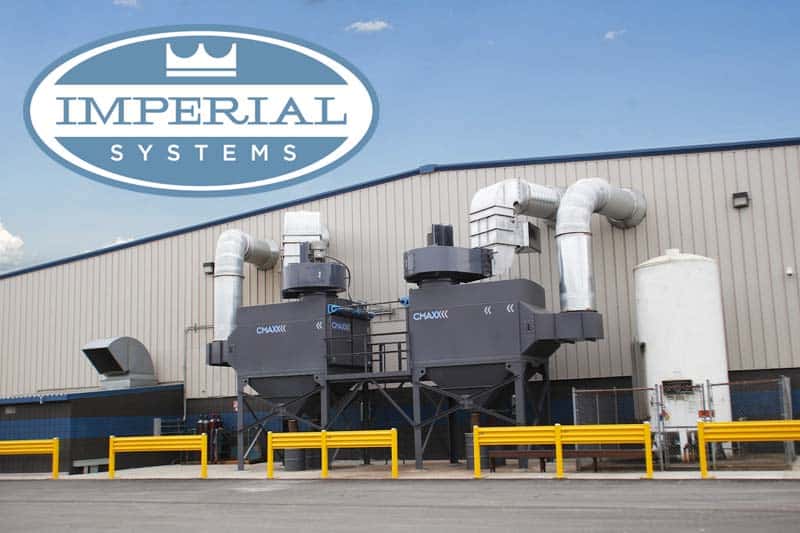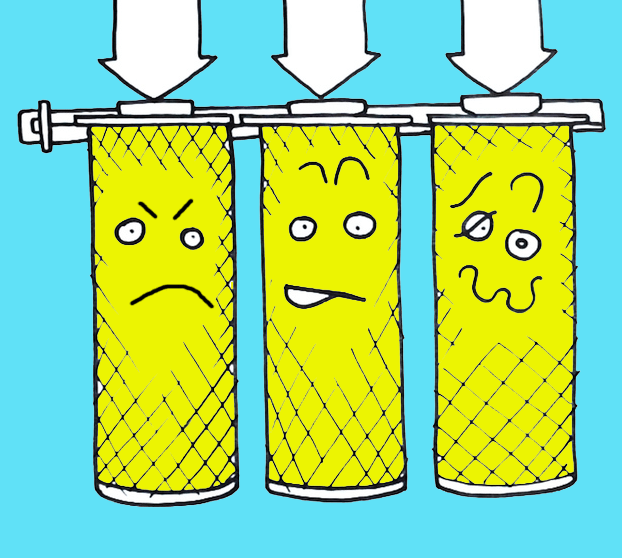
by Imperial Systems | Aug 31, 2016 | Uncategorized
Afraid to report unacceptable safety conditions at your work site? OSHA can protect you from retaliation.
It is a known fact that many workers are forced to work in unsafe environments. Most companies certainly strive to provide safe and healthy working conditions for their employees. However, there are some places that are unwilling to make worker safety a top priority. If you know you are in a situation where your safety and others who work with you are at risk, you may have fears of losing your job if you bring it to anyone’s attention.

The stigma of being a whistleblower is not what it used to be in the past. In fact, OSHA has a program in place that protects your rights as an employee. Such provisions include:
- The right to file a safety complaint to OSHA
- Protection from employer retaliation, such as termination
- The right to participate in OSHA inspections and talk to the inspector
- The right to review employer exposure and/or injury records
OSHA has fined many corporations due to the unfounded termination of employees who report safety violations. It is simply against the law, and in the end, costs the company more than just fixing the safety problem itself.
Keep in mind that sometimes it may not be malicious intent by your employer. Even more, they may not be aware of safety issues that concern you. So, how do you approach this situation? Read this informative article that gives you tips and advice about talking to superiors with confidence.
All in all, there are many options for shop and factory workers to be part of the solution in making their job safe. Click on the links below if you have questions or want to learn more about safety in the workplace.
http://www.whistleblowers.gov/index.html
https://www.osha.gov/workers/index.html
OSHA NEWS: http://bit.ly/2bX9j1E
Read more

by Imperial Systems | Aug 29, 2016 | Uncategorized
Read these 5 odd metal facts about Tin that you never thought about…and will always remember:
- TIN PEST: At around -20 degrees F, tin will transform itself from a shiny, flexible metal to a dull, brittle powder. This is called “tin pest” and can cause things made of tin to crumble to dust when the weather gets very cold.
- WHISKERS: Pure tin used in electronics is known to grow “whiskers”. These whiskers, which form for unknown reasons, cause havoc in systems where they can act like a tiny antenna, damage delicate parts, or cause short circuits.
- TIN CANS: Tin cans aren’t made of tin. They are made of steel. The steel is sometimes coated with tin to improve corrosion resistance, but cans made out of tin were not only more expensive but also subject to “tin pest”, which made the cans brittle and breakable.
- TIN CRY: There’s a distinctive whining cry that is heard when a piece of tin is bent. This “tin cry” happens because the metal is made up of very tiny crystals, and bending the metal causes the crystals to scrape against each other.
- THE BRONZE AGE: Two thousand years before iron came into common use, bronze was the metal that revolutionized weapons, art, and civilization. This alloy of copper and tin was so superior to any other metal in use at the time that its discovery ushered in the Bronze Age.
http://periodic.lanl.gov/50.shtml
http://www.lenntech.com/periodic/elements/sn.htm
Read more

by Imperial Systems | Aug 26, 2016 | Uncategorized
Your smartphone most likely has an app for anything you can imagine these days. But what about a safety app that can give you instant information regarding the safety of your factory and workers? OSHA guidelines? Due to the fast-paced world we live in, you don’t always have time to browse for information on your desktop or laptop computer. So, these downloadable safety apps are just what you may need.

NIOSH Chemical Hazards
If you’re handling industrial dust or welding fumes, chemical hazards are something you might need to look up information about in a hurry. Many chemicals are especially dangerous in fume, smoke, or dust form, when they can be inhaled.
The National Institute for Occupational Safety and Health (NIOSH) has decided to put all its handy information about chemical hazards at your fingertips. They have a mobile app, just in case you need to know RIGHT NOW.
The safety app can be downloaded here: http://www.cdc.gov/niosh/npg/mobilepocketguide.html. Here’s what you get:
For any of 634 chemicals, you can find useful information, including important things like:
- Physical description
- Upper and lower explosion limit
- Exposure routes and symptoms
- Recommended PPE
- First Aid treatments
If you’ve always wanted to have the NIOSH Chemical Hazards data on your phone, now you can! And even if you’ve NEVER wanted to have the NIOSH Chemical Hazards data on your phone, this resource is handy. And if nothing else, it probably makes great late-night reading if you’re having trouble falling asleep…
Noise Level Measurement Safety Apps
While you won’t get scientifically precise decibel measurements with your smartphone, there are many apps available that can give you a reasonably accurate idea of whether the noise level is high enough to damage hearing.
Scientists tested a number of apps, including Decibel Meter Pro, iSPL Pro, Sound Level Meter, and Noise Hunter ( J. Acoust. Soc. Am. 135, EL186 (2014); http://dx.doi.org/10.1121/1.4865269). Their results indicated that apps can provide reliable measurements of noise levels, although at the time of testing in 2014 Android lagged behind iOS in audio quality and consistency (this has probably improved for both types of devices since that time, since my phone from six months ago is now an antique).
A safety app like this isn’t just useful for workplace measurements. How often are you exposed to potentially hearing-damaging noise at home or in the community? Maybe you’re at a sports event, or maybe you’re mowing your lawn. Maybe you just want to show your teenage daughter how loud her music actually is (and yes, I am going home to try that). Because we stop noticing how loud our environment is after we adjust to it, having an app on your phone that can tell you if you’re in the danger zone might not be a bad idea.
OSHA’s Heat Safety App Tool
With plenty of unpleasantly hot days left to come before cool weather arrives (or if you live somewhere that doesn’t get cool weather), OSHA’s little heat safety app, available in English or Spanish, calculates the heat index, which is a much better measurement of heat danger than just the temperature and assigns a risk level based on OSHA’s categories:
Less than 91 degrees F: LOWER, use reasonable safety measures
91 to 103 degrees F: MODERATE, use precautions and increase awareness
103 to 115 degrees F: HIGH, more safety precautions needed
Greater than 115 degrees F: VERY HIGH, aggressive worker protection measures
The app (https://www.osha.gov/SLTC/heatillness/heat_index/heat_app.html) will offer reminders for workers to drink fluids, schedule rest breaks, and keep an eye on each other for signs of trouble. While it’s not the most exciting app in the world, it should be kept in mind that people die every summer from heat exposure, and we don’t always remember to take precautions, so it never hurts to have a reminder.
Read more

by Imperial Systems | Aug 24, 2016 | Uncategorized
Dust and Fume Filtration: How to Wreck Your Collector Filters in 5 Easy Steps
We obviously don’t want your dust and fume filtration system to stop working, but these five practices are the best ways to make sure your filters don’t last.

1. Clean Them
Cleaning your filters is one good way to ruin them. Cleaning filters with enough force to get the embedded dust out will often leave you with a bigger problem. That’s filters with holes in them, though they may be too small to see. But a fluorescent powder test will reveal the leaks where dust is getting through. Getting your filters cleaned is not the money-saving measure that it may seem. That’s because you’re basically paying someone to damage your filters.
2. Only Replace Some of Them
You may notice damage in one filter, but the others are okay. Why not just replace the damaged one? Your clean new filter will have less resistance than the others. As a result, it will get much more airflow and end up with a very short lifespan. If you want to see how quickly you can completely ruin a filter, this is a good way to find out. On a similar note, it’s not a good idea to put two different types or brands of filters in the same collector at the same time, since they may not have the same surface area or airflow. Efficient dust and fume filtration relies on an even balance of these factors among other things.
3. Use the Wrong Material
There are lots of different kinds of dust and fume. Some dust particles are much smaller than others. Some types of dust clump and stick together. Other types are rough and have jagged edges, and some applications give you dust that is damp, or that has oily materials mixed into it. Whether it’s a nanofiber filter designed to capture very small particles or a filter with an oleophobic coating that won’t get clogged up by oily or greasy dust, the right filter will last longer, and the wrong filter will end up damaged or unable to function.
4. Beat Them Up
Cartridge filters are made to handle dust, not physical abuse. If you want to wreck your filters, handling them roughly or storing them incorrectly (such as stacking them on top of each other) is a good way to do it. The basic media of all cartridge filters is cellulose, which is the same material as paper or cardboard, so treat them accordingly. If you’re nice to them while storing and handling them, they are more likely to provide proper dust and fume filtration when you install them in your collector.
5. Set Them on Fire
Seems pretty obvious, but it happens more often than you’d think. Dust, including everything from aluminum to corn, can be very flammable. A fire in your dust collector is the fastest way to wreck your filters (and possibly a lot of other things). Fortunately, there are measures you can take to help prevent this from happening. A properly designed dust collection system will help prevent fires and will control and safely vent a fire if one should occur.
Dust and Fume Filtration Expertise
Imperial Systems is a huge advocate of employee safety and health in the workplace. This is why we are in business. Have questions about your current dust and fume filtration system? Contact our knowledgeable and experienced team today to help with any concerns you may have. Contact us today!
Read more

by Imperial Systems | Aug 18, 2016 | Uncategorized
Manganese: Steel, Billionaires, and Government Cover-ups
Manganese is a key component of modern steel. It is an essential nutrient and a neurotoxin. And it was a cover-up for one of the most secretive and expensive CIA plots of the Cold War.
Almost all steel currently in use relies on manganese for some of its most important properties. Adding manganese to iron ore removes oxygen and sulfur. Using it as an alloy to makes steel stronger, more durable, and less likely to break. Safes, gun barrels, and military helmets use steels with very high levels of manganese (up to 15%).
Manganese is an important component of steel and is also used in some welding. So, it is often a component of welding fumes. In this situation, it is very dangerous. That’s because inhaled manganese causes a form of brain damage that can mimic Parkinson’s disease. Symptoms include tremors and difficulty walking. Cutting a material containing manganese with a laser or plasma cutter presents a risk of inhaling manganese fumes. It’s one of the reasons a good dust and fume collection system such as our CMAXX™ is important in these applications.

Here’s an Interesting Story
Okay, so… where do the billionaire and the covert CIA operations come in?
In 1968, a Soviet submarine with nuclear missiles sank in the Pacific Ocean in international waters. The Soviet search vessels were unable to locate the wreck. The CIA very much wanted access to what might be a treasure trove of Soviet nuclear secrets and codes. However, hanging around in the vicinity of a missing Soviet nuclear submarine would be difficult to explain. A cover story was needed, and that cover story was manganese.
The Manganese Deception
With the help of billionaire Howard Hughes, the CIA hid their operation, called “Project Azorian.” They claimed that their deep sea exploration ship was to go prospecting. They would search for a huge amount of manganese found on the ocean floor. It would be in the form of manganese nodules, lumps of manganese, and iron. In theory, Howard Hughes’ company would profitably harvest these nodules with a ship equipped for exploring and collecting things from the bottom of the ocean. Since manganese is important for steel manufacturing (and therefore important to the military), they mine almost all of it outside the United States.
In reality, this was never a reasonable way to get access to a metal that they could easily mine in many parts of the world. However, it was an excuse to send a ship equipped with everything needed for the project to wander around the Pacific. On paper, Hughes was the owner of the ship, so it wouldn’t attract as much attention as a military vessel while probing around in international waters.
The project was able to recover parts of the sub, possibly including two missiles and other classified information. But it could not recover most of the submarine. After Project Azorian ended, prospecting for manganese on the ocean floor was abandoned in favor of the less ridiculous solution of digging it out of the ground.
There are also people who think the cover-up was a cover-up, pretending to have an interest in the lost submarine when in reality they were trying to access deep-sea communication cables or build underwater nuclear weapon launchers. This story seems approximately as logical as deep ocean rock collecting, although if surface reserves of manganese ever run out, the nodules scattered across the ocean floor might be a target of interest again.
Check out these resources to learn more!
http://nsarchive.gwu.edu/nukevault/ebb305/
http://www.lenntech.com/periodic/elements/mn.htm
Read more





